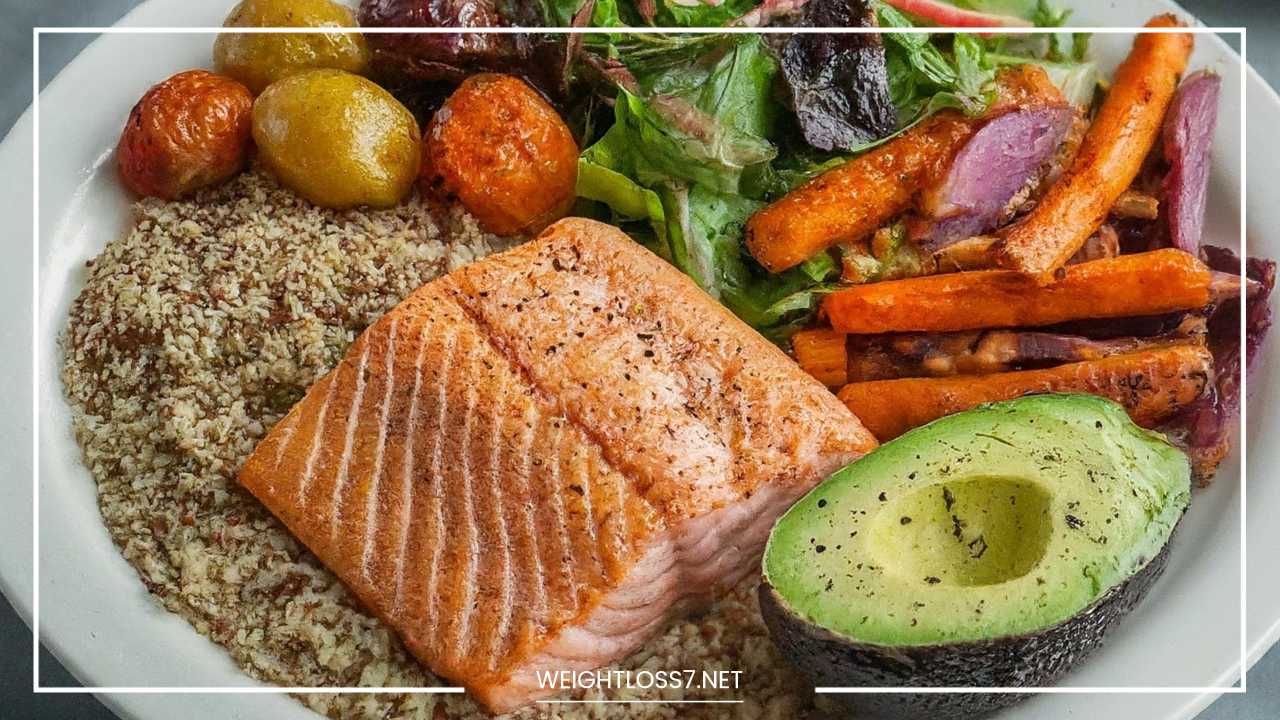The South Beach Diet Side Effects

South Beach Diet
The South Beach Diet: Unveiling the Potential Downsides and Exploring Sustainable Alternatives
The South Beach Diet, championed by Dr. Arthur Agatston, has become a household name in the weight loss world. Its phased approach, emphasizing lean protein, healthy fats, and low-glycemic vegetables, has attracted millions seeking to shed pounds.
However, before diving headfirst into this popular diet, it’s crucial to understand not only its potential benefits but also the lurking side effects that can derail your progress and potentially impact your health.
This comprehensive blog post delves into the intricate workings of the South Beach Diet, dissecting its structure, uncovering the potential side effects, and offering alternative approaches that promote sustainable healthy eating habits.
A Deep Dive into the South Beach Diet’s Phases
The South Beach Diet unfolds in three distinct phases, each with specific dietary guidelines and goals:
-
Phase 1 (14 Days): The Rapid Weight Loss Phase: This initial phase is the strictest and most restrictive. Lean protein sources like chicken, fish, and lean cuts of beef take center stage. Healthy fats from avocados, nuts, and olive oil are encouraged, while vegetables with a low glycemic index (meaning they cause a slower rise in blood sugar) such as broccoli, spinach, and asparagus become dietary staples. Fruits, grains (including whole grains), and unhealthy fats like processed oils and fried foods are strictly off-limits. This restrictive phase aims for rapid weight loss, often touted as a motivator for diet adherence.
-
Phase 2 (Reintroduction): Building Healthy Habits: Here, the diet introduces a wider range of healthy foods. Fruits with a lower glycemic index, like berries and apples, are gradually reintroduced. Whole grains like brown rice and quinoa make their appearance, offering a much-needed source of fiber and complex carbohydrates. Legumes, another excellent source of fiber and protein, are also added to the menu. This phase aims to establish healthy eating practices that can be sustained long-term.
-
Phase 3 (Maintenance): A Lifestyle Change: This final phase emphasizes the importance of maintaining the healthy eating habits established in Phase 2. It encourages portion control, mindful eating, and continued focus on whole, unprocessed foods. The goal of this phase is to prevent weight regain and promote overall well-being for the long term.
Potential Side Effects: The Flip Side of the Coin
While the South Beach Diet offers the promise of rapid weight loss and improved health markers, there are potential downsides to consider:
-
The Ketosis Rollercoaster: The significant carbohydrate restriction in Phase 1 can lead your body into a metabolic state called ketosis. In ketosis, your body starts breaking down stored fat for energy instead of relying on readily available glucose from carbohydrates. While generally safe for most healthy individuals, ketosis can trigger flu-like symptoms like nausea, headaches, fatigue, bad breath, and dizziness. These symptoms can be quite unpleasant and potentially deter people from continuing with the diet.
-
Nutritional Imbalances: The exclusion of fruits and whole grains in Phase 1 can lead to deficiencies in essential vitamins, minerals, and fiber. Fruits are a treasure trove of vitamins, antioxidants, and phytonutrients, all crucial for optimal health. Whole grains provide a steady stream of energy and promote healthy digestion due to their high fiber content. These deficiencies can manifest as lower energy levels, weakened immune function, and digestive issues like constipation.
-
Social Struggles and Isolation: The restrictive nature of the South Beach Diet, especially in Phase 1, can make social gatherings and dining out challenging. Sticking to the diet’s guidelines at restaurants can be difficult, and social pressures to indulge can be strong. This can lead to feelings of isolation and hinder long-term adherence, especially for those with active social lives.
-
The Yo-Yo Effect: A Relapse Risk: The rapid weight loss often experienced in Phase 1 may not be sustainable in the long run. When reintroducing foods in Phase 2, there’s a risk of overindulging, especially in previously restricted foods like carbohydrates. This can lead to weight regain, creating a yo-yo effect that can be discouraging and detrimental to overall health.
-
Disordered Eating Patterns: The diet’s classification of foods as “good” and “bad” can contribute to an unhealthy relationship with food. This can lead to feelings of guilt, shame, and anxiety around eating, potentially triggering disordered eating patterns in some individuals.
-
Limited Scientific Backing: While some studies have shown promise for the South Beach Diet in promoting weight loss and improving blood sugar control, the long-term effectiveness and health claims surrounding the diet lack robust scientific backing. More research is needed to fully understand the diet’s long-term impact on health and its suitability for various populations.
Mitigating the Side Effects: Strategies for Success
If you choose to embark on the South Beach Diet journey, here are some strategies to minimize the side effects and maximize your chances of success:
-
Consult a Doctor or Registered Dietitian: Before diving in, schedule a consultation with your doctor or a registered dietitian. They can assess your individual health needs, determine if the South Beach Diet is suitable for you, and offer personalized guidance throughout the process. This is especially important if you have any pre-existing health conditions.
-
Gradual Carb Reduction: Consider a more gradual approach to carbohydrate restriction, especially if you’re new to low-carb diets. This can help your body adapt more smoothly and minimize the unpleasant effects of ketosis. Instead of completely eliminating carbs in Phase 1, start with moderate reductions and monitor your body’s response.
-
Prioritize Whole, Unprocessed Foods: Throughout the diet, prioritize whole, unprocessed foods over processed options. This ensures you’re getting a balanced range of nutrients, even within the limitations of each phase. Choose lean protein sources, healthy fats from nuts, seeds, and avocados, and focus on low-glycemic vegetables to meet your nutritional needs.
-
Listen to Your Body: Pay close attention to how you feel physically and mentally throughout the process. If you experience persistent headaches, fatigue, or digestive issues, it might be a sign that the diet isn’t the best fit for you. Don’t hesitate to adjust the approach or consult your doctor if needed.
-
Develop Sustainable Habits: Focus on developing healthy eating habits you can maintain long-term, rather than relying solely on the structured phases of the South Beach Diet. Learn about portion control, mindful eating practices, and how to make healthy substitutions in your meals. This will equip you to navigate social situations and maintain a healthy weight beyond the confines of the diet.
-
Mindful Eating Practices: Integrate mindful eating practices into your routine. This involves paying attention to hunger cues, savoring your food, and eating slowly without distractions. Mindful eating can help you avoid overeating and develop a more positive relationship with food.
Alternative Approaches for Lasting Change
While the South Beach Diet has its place, it’s not the only path to achieving your weight loss and overall health goals. Here are some alternative approaches that promote sustainable healthy eating habits and well-being:
-
The Mediterranean Diet: This heart-healthy diet emphasizes fruits, vegetables, whole grains, healthy fats from olive oil and nuts, and lean protein sources like fish and legumes. It promotes a balanced and diverse dietary pattern that’s not only delicious but also backed by science for its long-term health benefits. The Mediterranean Diet encourages a lifestyle change rather than a restrictive approach, making it a sustainable option for many people.
-
The DASH Diet: Designed primarily to lower blood pressure, the DASH Diet (Dietary Approaches to Stop Hypertension) focuses on fruits, vegetables, whole grains, and low-fat dairy products. It also includes lean protein sources like poultry and fish. Similar to the Mediterranean Diet, the DASH Diet promotes a balanced and sustainable approach to healthy eating that can benefit overall well-being, not just blood pressure control.
-
The Flexitarian Diet: This plant-based approach allows for occasional lean protein intake but emphasizes a focus on fruits, vegetables, whole grains, legumes, nuts, and seeds. It offers flexibility while encouraging a dietary pattern rich in fiber, essential vitamins, and minerals. The Flexitarian Diet can be a good choice for those who want to incorporate more plant-based meals into their routine without completely eliminating animal products.
A Journey Towards Sustainable Wellness
The South Beach Diet can be effective for weight loss in the short term, but it’s crucial to weigh the potential side effects against your goals and overall health.
Consider discussing your options with a healthcare professional and explore alternative approaches that promote sustainable healthy eating habits for long-term success.
Remember, the best diet is the one you can stick with and that nourishes your body for optimal health. By prioritizing whole foods, mindful eating practices, and a balanced approach to nutrition, you can embark on a journey towards lasting wellness, not just a quick fix.
Beyond Weight Loss: Exploring the South Beach Diet’s Impact on Health
The South Beach Diet’s primary focus is weight loss. However, its impact on other health markers deserves exploration. Here’s a deeper look:
Potential Benefits for Certain Conditions:
-
Blood Sugar Control: The diet’s emphasis on low-glycemic carbohydrates may benefit individuals with type 2 diabetes or prediabetes. By stabilizing blood sugar levels, it can potentially reduce the need for medication and improve overall glycemic control.
-
Heart Health: The focus on healthy fats, lean protein, and vegetables can positively impact heart health. Replacing saturated and trans fats with healthy fats like those found in olive oil and avocados can lower LDL (“bad”) cholesterol and increase HDL (“good”) cholesterol, reducing the risk of heart disease.
-
Metabolic Syndrome: The South Beach Diet may contribute to managing metabolic syndrome, a cluster of risk factors including high blood pressure, high blood sugar, unhealthy cholesterol levels, and excess abdominal fat. By addressing these factors through dietary changes, the diet may offer some benefit.
Important Considerations and Missing Pieces:
-
Limited Long-Term Research: While some studies suggest potential benefits for specific conditions, long-term, robust research on the South Beach Diet’s impact on health is lacking. More research is needed to fully understand its long-term effects, particularly for individuals with pre-existing health conditions.
-
Individualized Needs: The South Beach Diet may not be suitable for everyone. Individuals with certain medical conditions or nutritional deficiencies may require a more personalized approach to achieve optimal health. Consulting a healthcare professional before starting the diet is crucial.
-
Focus Beyond Weight Loss: While weight loss is often a major motivator, it’s important to remember that healthy eating is about more than just shedding pounds. A balanced diet that promotes overall well-being should be the ultimate goal.
The Importance of a Holistic Approach
For sustainable health and well-being, a holistic approach that incorporates healthy eating habits, regular physical activity, and stress management is crucial. The South Beach Diet can be a starting point, but it’s not a one-size-fits-all solution.
Here are some additional tips for a holistic approach to health:
-
Find an Exercise Routine You Enjoy: Engage in physical activity you find enjoyable, whether it’s brisk walking, dancing, swimming, or team sports. Aim for at least 150 minutes of moderate-intensity exercise per week.
-
Manage Stress Effectively: Chronic stress can negatively impact your health. Find healthy ways to manage stress, such as yoga, meditation, deep breathing techniques, or spending time in nature.
-
Prioritize Quality Sleep: Aim for 7-8 hours of quality sleep each night. Adequate sleep allows your body to repair and recharge, promoting overall health and well-being.
Final Word: Making Informed Choices
The South Beach Diet has its place, but it’s vital to make informed choices before embarking on this or any other dietary program. Weigh the potential side effects against your individual needs and health goals.
Consulting a healthcare professional or registered dietitian can help you determine the best approach for you.
Remember, the journey towards sustainable health requires a holistic approach that prioritizes not just weight loss but overall well-being.
By incorporating healthy eating habits, regular physical activity, stress management practices, and quality sleep into your lifestyle, you can pave the path to a healthier and happier you.

















